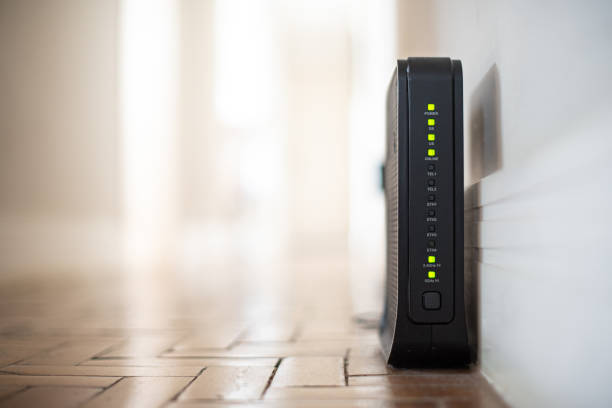What to Know About Home Wi-Fi Costs and Internet Box Options
In today's connected world, reliable home Wi-Fi is essential for work, entertainment, and staying in touch with loved ones. However, navigating the landscape of internet providers, Wi-Fi costs, and internet box options can be overwhelming. This article will break down the key factors that influence Wi-Fi pricing, help you choose the right home Wi-Fi provider, and explore how internet box features affect your overall experience and monthly costs.

How do internet box features impact Wi-Fi pricing?
The features of your internet box, also known as a router or modem-router combo, play a significant role in determining your Wi-Fi costs. Higher-end models with advanced features typically come with a higher price tag, either as an upfront purchase or as part of your monthly internet plan.
Key features that can affect pricing include:
-
Wi-Fi standards: Newer standards like Wi-Fi 6 (802.11ax) offer faster speeds and better performance but are generally more expensive than older standards.
-
Dual-band or tri-band capabilities: Routers that can broadcast on multiple frequency bands provide better coverage and reduced interference, often at a premium.
-
Security features: Advanced security protocols and built-in firewalls can increase the cost of internet boxes but offer better protection for your network.
-
Range and coverage: Mesh Wi-Fi systems or routers with extended range capabilities usually come at a higher price point but can significantly improve coverage in larger homes.
What factors influence monthly Wi-Fi costs?
Several factors contribute to your monthly Wi-Fi costs beyond the internet box itself:
-
Internet speed: Higher speeds generally come with higher monthly fees. Consider your household’s needs when selecting a plan to avoid overpaying for unnecessary bandwidth.
-
Data caps: Some providers impose data limits, with additional charges for exceeding them. Unlimited plans typically cost more but can be worthwhile for heavy users.
-
Bundle deals: Packaging internet service with TV or phone services can sometimes lower overall costs, but carefully evaluate if you need all the included services.
-
Contract length: Providers may offer discounts for longer-term commitments, but weigh the savings against the flexibility of shorter contracts.
-
Equipment rental fees: Many ISPs charge monthly fees for renting their internet boxes. Purchasing your own compatible equipment can save money in the long run.
What should you consider when choosing a home Wi-Fi provider?
Selecting the right home Wi-Fi provider involves more than just looking at advertised speeds and prices. Consider these factors:
-
Availability: Not all providers offer service in every area. Check which options are available at your specific address.
-
Reliability: Research customer reviews and ask neighbors about their experiences with local providers to gauge service consistency.
-
Customer support: Look for providers with responsive customer service and technical support to address any issues quickly.
-
Installation and setup: Consider whether professional installation is required and if there are associated fees.
-
Future-proofing: Choose a provider that offers plans that can accommodate your growing bandwidth needs over time.
-
Additional perks: Some providers offer extras like free antivirus software, cloud storage, or public Wi-Fi hotspot access, which may add value to your plan.
How can you find the best Wi-Fi option for your home?
To find the optimal Wi-Fi solution for your home, follow these steps:
-
Assess your needs: Determine how many devices will connect, what activities you’ll be doing online, and your budget constraints.
-
Research available providers: Use online tools to compare providers and plans available in your area.
-
Read the fine print: Carefully review contract terms, including any introductory rates that may increase after a certain period.
-
Consider your own equipment: Calculate whether buying your own router or modem could save money compared to provider rental fees.
-
Negotiate: Don’t hesitate to ask providers about current promotions or if they can match competitors’ offers.
What are some real-world Wi-Fi cost comparisons?
To give you a better idea of what to expect in terms of pricing, here’s a comparison of some popular internet providers and their offerings:
| Provider | Plan Name | Speed | Monthly Cost | Equipment Fee |
|---|---|---|---|---|
| Comcast Xfinity | Performance | 100 Mbps | $39.99 | $14/month |
| AT&T | Internet 300 | 300 Mbps | $55.00 | Included |
| Verizon Fios | 300 Mbps | 300 Mbps | $39.99 | Included |
| Spectrum | Internet | 200 Mbps | $49.99 | $5/month |
| Cox | Internet Essential 50 | 50 Mbps | $29.99 | $12/month |
Prices, rates, or cost estimates mentioned in this article are based on the latest available information but may change over time. Independent research is advised before making financial decisions.
When comparing these options, remember that advertised prices often don’t include taxes, fees, or equipment costs. Additionally, some providers offer temporary promotional rates that increase after an introductory period.
In conclusion, understanding the factors that influence home Wi-Fi costs and internet box options is crucial for making an informed decision. By considering your specific needs, researching available providers, and carefully comparing plans and features, you can find a Wi-Fi solution that offers the best balance of performance and value for your home.




